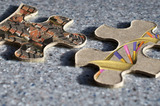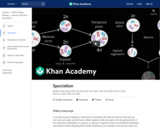
- Subject:
- Psychology
- Social and Behavioral Sciences
- Provider:
- Rice University
- Provider Set:
- OpenStax College


By the end of this section, you will be able to:Explain the basic principles of the theory of evolution by natural selectionDescribe the differences between genotype and phenotypeDiscuss how gene-environment interactions are critical for expression of physical and psychological characteristics


What makes two organisms members of different species? Learn about the forces behind reproductive isolation. By Ross Firestone.

This final lecture considers psychological perspectives on human nature (evolutionary psychology) and how to live our lives (happiness). For instance, to what extent do attitudes and behaviors about sex and race have evolutionary roots? Does more money, more vacation time, or more choice actually make us happier? Can we predict what things will make us happy, and act upon those predictions?

Species number and relative abundance affect the diversity of a community. We can use Simpson's index of diversity to quantify and compare the diversity of different communities.

Learn about speciation, including allopatric and sympatric speciation and mechanisms of reproductive isolation. Created by Sal Khan.

Statistical Physics in Biology is a survey of problems at the interface of statistical physics and modern biology. Topics include: bioinformatic methods for extracting information content of DNA; gene finding, sequence comparison, and phylogenetic trees; physical interactions responsible for structure of biopolymers; DNA double helix, secondary structure of RNA, and elements of protein folding; considerations of force, motion, and packaging; protein motors, membranes. We also look at collective behavior of biological elements, cellular networks, neural networks, and evolution.

This course analyzes cooperative processes that shape the natural environment, now and in the geologic past. It emphasizes the development of theoretical models that relate the physical and biological worlds, the comparison of theory to observational data, and associated mathematical methods.

Learn how to read and draw phylogenetic trees, or cladograms. Created by Sal Khan.

Dan Gilbert, author of "Stumbling on Happiness," challenges the idea that we'll be miserable if we don't get what we want. Our "psychological immune system" lets us feel truly happy even when things don't go as planned.

This video segment explores the use and production of Loulis, the only non-human primate to learn a human language in the way that human children most typically do: from his mother. Further, the work of R. Allen and Beatrix T. Gardner continued with several other young chimpanzees that became Loulis adopted older siblings (Moja, Tatu, & Dar) and who helped Loulis to develop his use of American Sign Language within the social milieu.
Duration: 9:09.

Were dinosaurs already undergoing a long-term decline before an asteroid hit at the end of the Cretaceous about 65.5 million years ago? A study led by Museum scientists gives a multifaceted answer. The findings, published in May, 2012, in the journal Nature Communications, suggest that in general, large-bodied, ƒ??bulk-feedingƒ?� herbivores were declining during the last 12 million years of the Cretaceous Period. But carnivorous dinosaurs and mid-sized herbivores were not. Created by American Museum of Natural History.